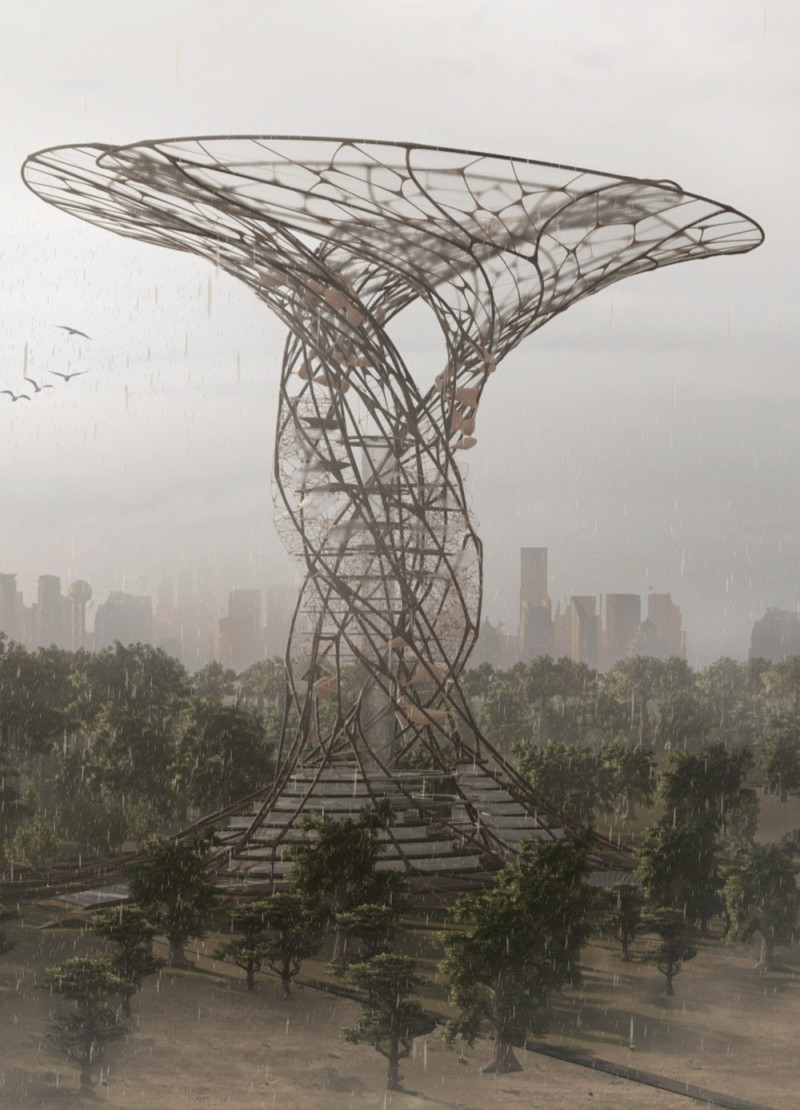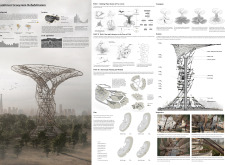5 key facts about this project
The Rainforest Ecosystem Rehabilitation project is located in Anaprus, Maranion, Brazil. It addresses the urgent problem of tropical rainforest degradation and promotes sustainable agricultural practices. The design aims to create a balance between farming and the preservation of the Amazon rainforest. It is centered on principles of sustainability and efficiency.
Architectural Organization
The structure is designed with three distinct levels. The lower level focuses on residential and agricultural spaces. The middle level includes laboratories for research and areas for observing birds. The upper level is dedicated to systems for collecting rainwater. By organizing the building vertically, it optimizes land use in the rainforest environment while accommodating diverse functions.
Water Management Systems
A notable feature of the design is its four-level water supply system. This system uses water-absorbent membranes and pipes to collect and filter rainwater. The water is made available for people, plants, and local wildlife. Managing water effectively is crucial for the community and for supporting the rainforest’s health. This sustainable approach helps address the challenges that farmers face in the area.
Biodiversity and Community Engagement
The project incorporates bird nests into its design to support local wildlife. These nests provide habitats and allow for study and observation of birds in their natural environment. The adjacent laboratories create opportunities for research and ecological education. Public spaces, including an Activity Room and an Atrium, encourage community gatherings and help educate visitors about the rainforest and its significance.
Terraced Agricultural Design
Terraced planting areas are also included, representing a commitment to sustainable farming practices. These terraces use techniques that maximize sunlight and efficiently use rainwater for irrigation. This method reduces soil erosion and improves soil productivity, contributing to the overall recovery of the rainforest ecosystem.
Rainwater is strategically collected at the top level of the building and directed through the structure, highlighting the relationship between the water management system and agricultural productivity. The design fosters an ongoing interaction between human activities and the surrounding natural environment.



















































